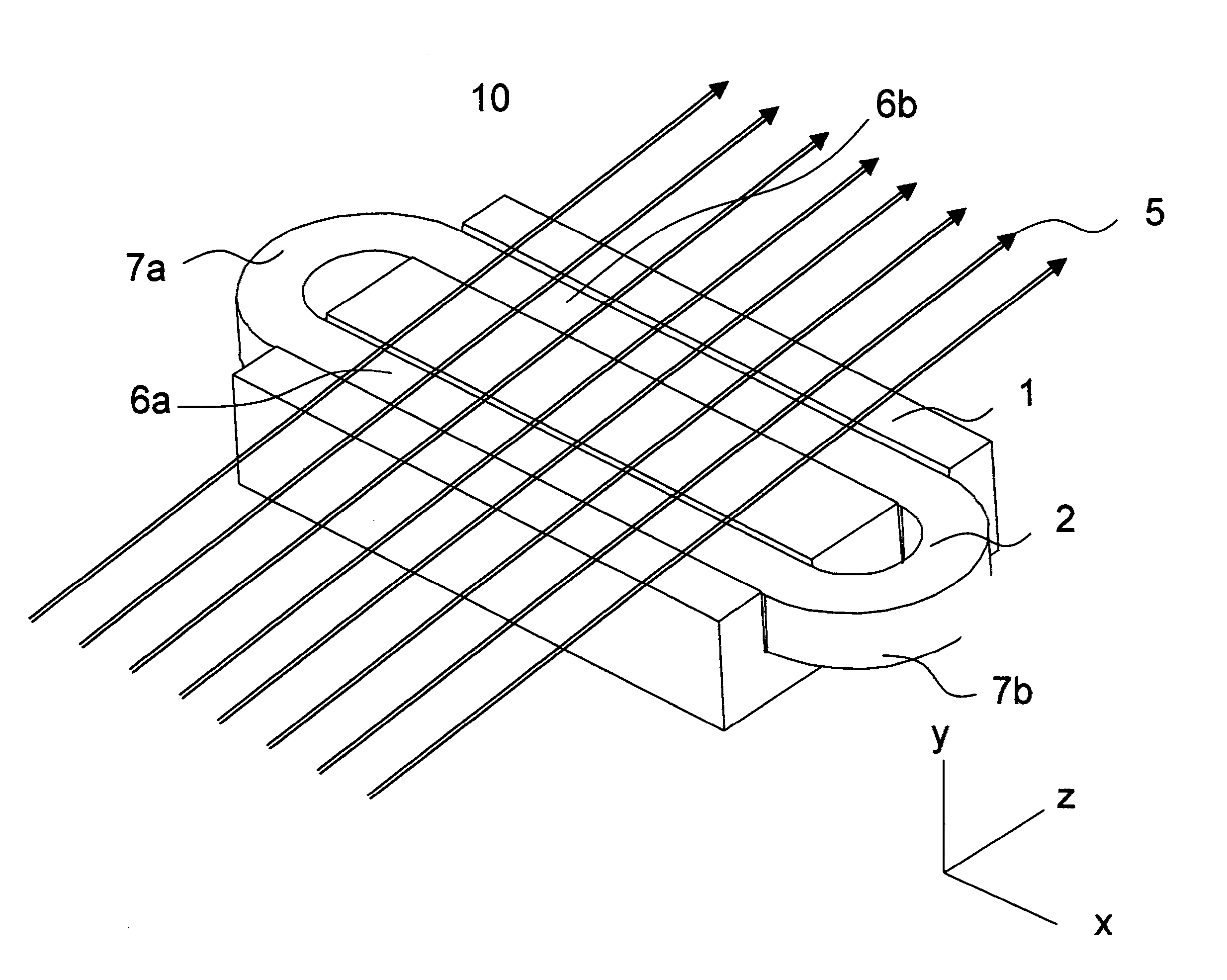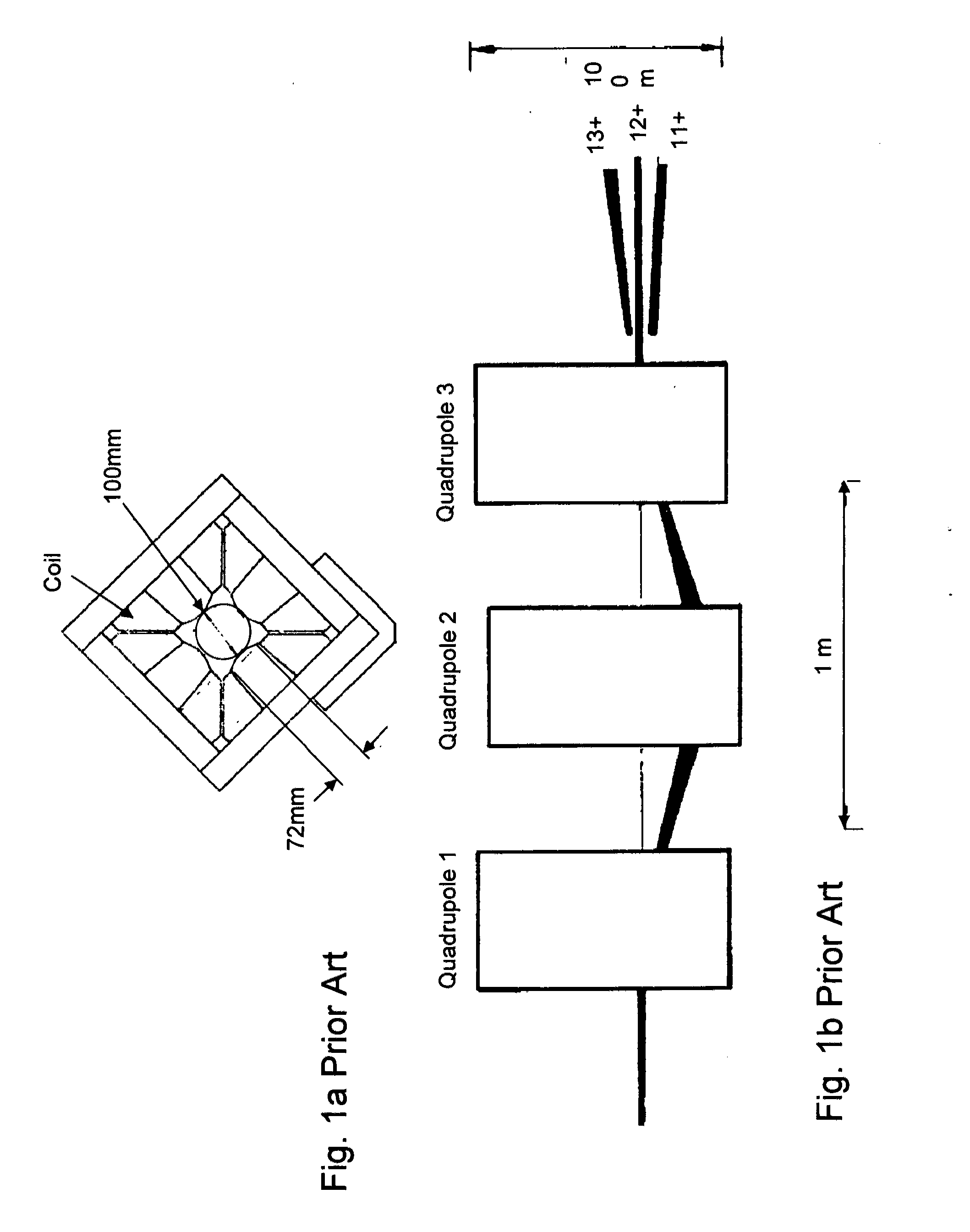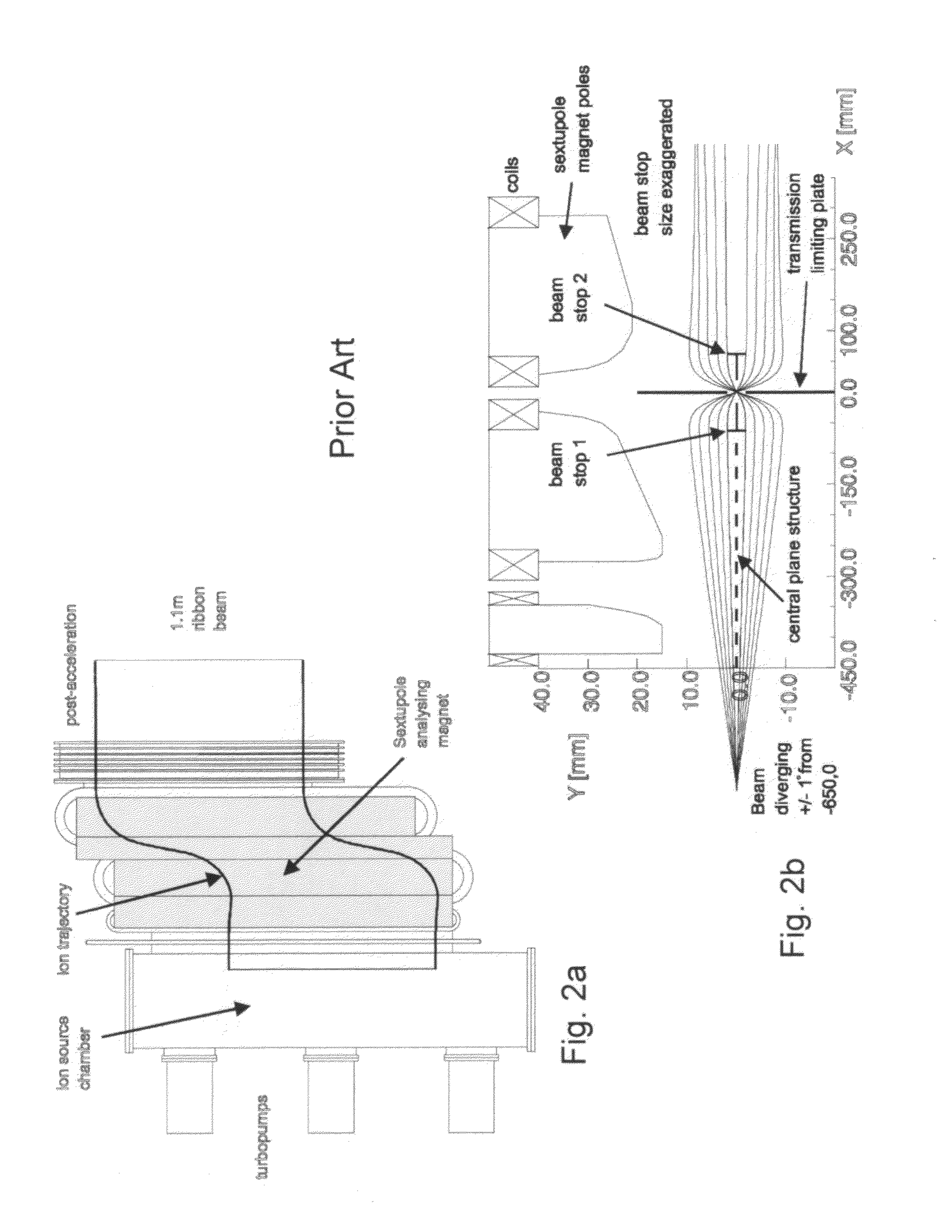Mass analyzer apparatus and systems operative for focusing ribbon ion beams and for separating desired ion species from unwanted ion species in ribbon ion beams
- Summary
- Abstract
- Description
- Claims
- Application Information
AI Technical Summary
Benefits of technology
Problems solved by technology
Method used
Image
Examples
second embodiment
[0102]an operational assembly which utilizes the basic apparatus described above in combination with a flat ferromagnetic plate 3 is shown by FIG. 4a. The ferromagnetic plate 3 lies in and similarly defines a z-x plane at coordinate y=0.
[0103]In this embodiment, there is a fixed gap distance of predetermined size separating the exposed face of the flat ferromagnetic plate 3 from the exposed face of the E-block-coil combination which is located at a coordinate of y=y1; and the traveling charged particle beam transversely passes over the length of this fixed gap distance and through the extended magnetic field present therein.
[0104]The extended magnetic field (generated by the E-block-coil combination) is effectively terminated on this ferromagnetic plate 3 at right angles to its internal exposed surface or face. In the plane y=0, there are essentially no magnetic field components in the x- or z-direction. However, at non-zero y coordinates, these components will appear.
[0105]As befor...
fourth embodiment
[0115]the invention is very much like that of Apparatus Version 3 as described above—except that the current in one of the coils is reversed, and thus the individual currents in the two discrete coils are opposed in charge / polarity. In this Apparatus Version 4, therefore, the most notable feature is that the two discrete E-block-coil combinations are oppositely magnetized and repel each other.
[0116]In evidence of this feature, FIG. 6 plots the field lines in this geometry; and the external fields are minimized in this geometry. This configuration is preferred for both performance and ease of analysis; as well as for the straight lengths of conductor which are arranged so that, in cross section, they are centered on the apexes of a rectangle. The direction of current alternates as one moves around the rectangle as shown in FIG. 9b, in contrast to the different current flow shown in FIG. 9a.
[0117]There is also a difference in the origin of the y-focusing in this arrangement. In Appar...
fifth embodiment
[0120]the apparatus optionally omits the coils from the construct and replaces part of the steel or other ferromagnetic material in the E-block mounting with a permanent magnet. However, such a change in structure means that the magnetic rigidity selected by the device can no longer be quickly adjusted. Adjustment of the traveling beam must now be made by changing the spacing of the components over a narrow range.
[0121]This alternative version works best with the field orientation as described above for Apparatus Version 4. That of Apparatus Version 3 is also possible, but net y deflection is difficult to control without additional coils 22; and adding such coils negates the benefit of permanent magnets. Also, for large sized beams, the cost of electricity to power the coils may be very significant—so if an application requiring a single beam species exists, the permanent magnet version may be markedly more advantageous.
Apparatus Version 6
PUM
 Login to View More
Login to View More Abstract
Description
Claims
Application Information
 Login to View More
Login to View More - R&D
- Intellectual Property
- Life Sciences
- Materials
- Tech Scout
- Unparalleled Data Quality
- Higher Quality Content
- 60% Fewer Hallucinations
Browse by: Latest US Patents, China's latest patents, Technical Efficacy Thesaurus, Application Domain, Technology Topic, Popular Technical Reports.
© 2025 PatSnap. All rights reserved.Legal|Privacy policy|Modern Slavery Act Transparency Statement|Sitemap|About US| Contact US: help@patsnap.com



